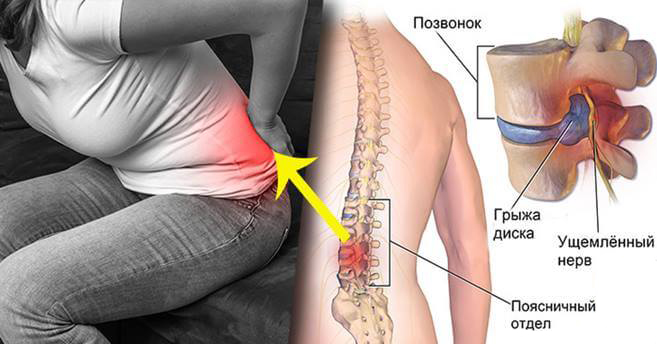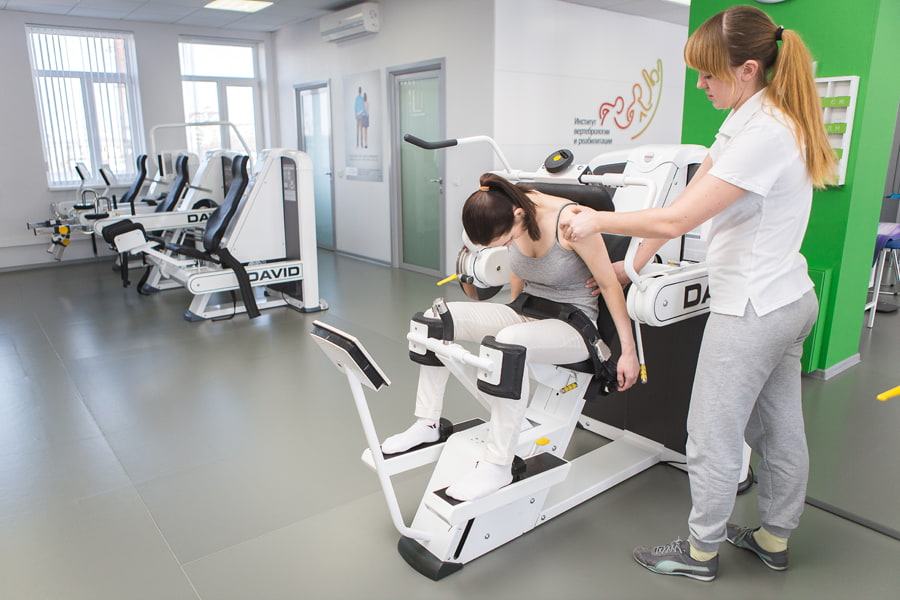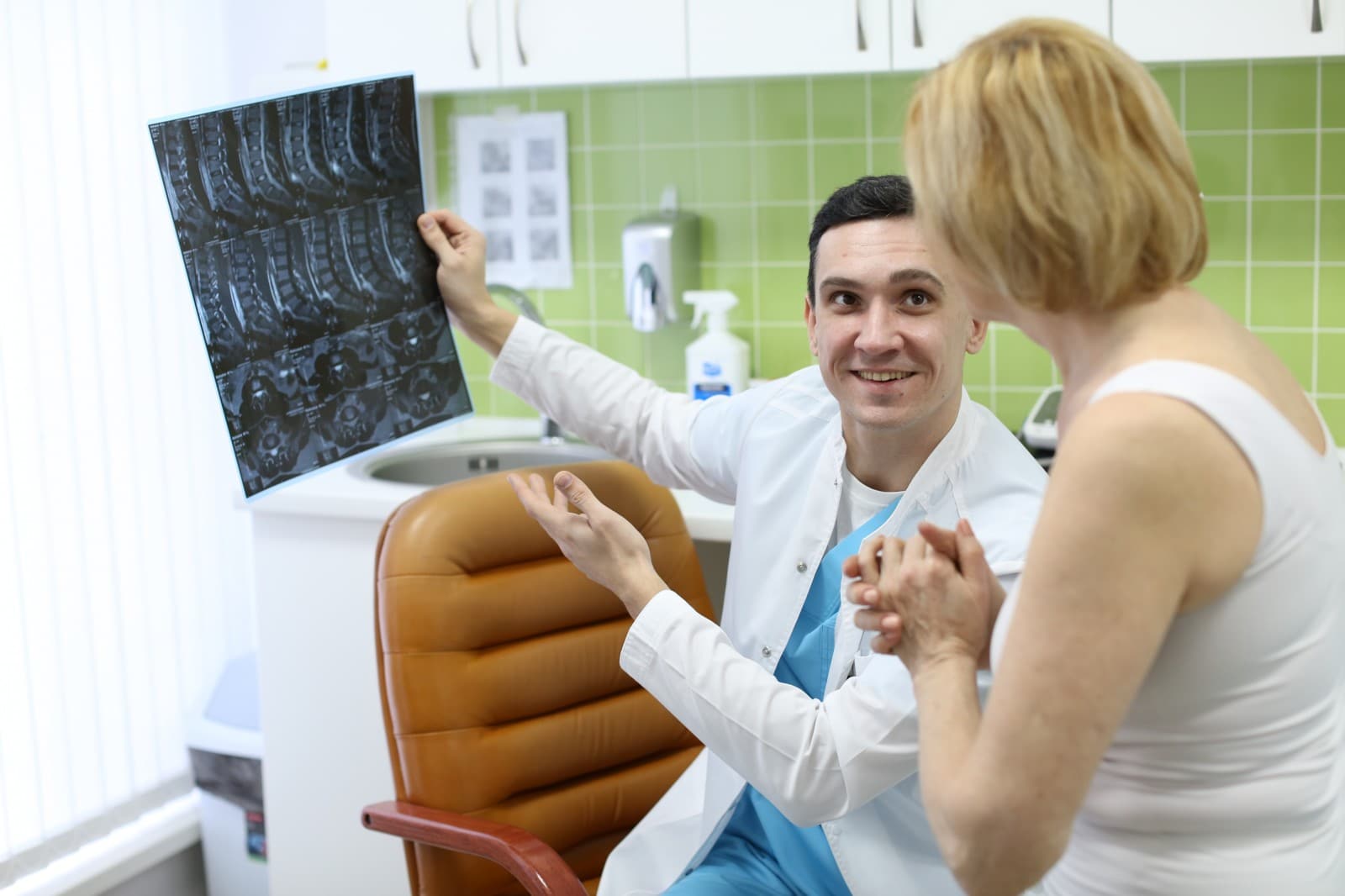Surgery to remove the intervertebral hernia belongs to the category of complex surgical interventions. Rehabilitation after spinal surgery is necessary to return the patient to the usual rhythm of life in full, without discomfort or pain.
The main purpose of the rehabilitation measures is to restore the full range of movements, as well as the formation of a wealthy muscle corset. The spine is a passive structure, movements in it are possible due to the many muscles, ligaments and fascia that envelop the spine, distributing the load evenly to all segments, sequentially including them in motion. In order for the supporting muscles to function and fulfill their tasks effectively, rehabilitologists prescribe a number of procedures, the choice of which is carried out taking into account:
-
age, weight and lifestyle of the patient;
-
the presence of diseases, including chronic;
-
complexity of surgical intervention;
-
patient status after surgery, etc.

The most important factors are the patient’s age and lifestyle, since in trained young people, recovery from spinal hernia surgery requires less time. Rehabilitation measures contribute to the stimulation of metabolism and blood flow in muscle tissues, which is a prerequisite for tissue regeneration, including those that were injured during surgery.
Recovery steps
The duration of the rehabilitation process under the supervision of specialists after removal of the hernia is up to 1 year and is carried out in several stages.
Stage |
Recovery period |
Type of treatment |
Necessary |
Prohibited |
early |
first 2 weeks |
stationary |
- wear a corset; - take a medical course; |
- sit; - lift more than 3-5 kg; - do exercises in which the spine is involved; - massage |
|
late |
from 2 to 6 weeks |
stationary-outpatient |
- perform physiotherapy |
- be in a standing or sitting position for a long time; - lift more than 5-8 kg; - engage in FLC without a warm-up; - supercool |
|
from 6 weeks up to 2 months |
outpatient |
- do therapeutic massage; - perform physiotherapy; - exercise therap |
||
|
remote |
from 2 to 6 months |
- do therapeutic massage; - perform physiotherapy; - increase the load with exercise therapy |
- lift heavy loads; - overwork |
|
|
after 6 months |
- take a course of exercises on special medical simulators |
The early period
The first two weeks
The purpose of treatment and rehabilitation measures is to relieve swelling in the operated area and the elimination of the pain. Doctors prescribe patients medications and treatments designed to prevent complications after surgery.
In order to reduce the load on the spine, patients are prescribed the wearing of orthopedic corsets, also promotes rapid healing of sutures.
In the early period it is forbidden to sit or lift more than 5 pounds. You also cannot engage in active sports and do any physical exercise without a corset, including making sharp twisting movements in the spine. Banned manual therapy.
From two to six weeks
After discharge from inpatient rehabilitation after removal of intervertebral hernia is at home. PSI offers patients the curation process of rehabilitation experienced physiotherapist. Rehabilitation measures in this case are held in the medical center.
At this time, not a long time to be in the same position, to SuperCool the area of surgical intervention, to exercise without prior warm-up. It is possible to lift loads whose weight does not exceed 8 pounds.
Late period
From six weeks to two months
At this stage begins the process of restoration of muscles, so the movements should be careful. Excessive exercise is excluded. The doctor prescribes the program, including physiotherapy, therapeutic massage, and if necessary, drug therapy, physical therapy and special exercises. Classes should be held under the supervision of a physiotherapist.
The remote period
From two to six months
The main effort of the patient at this stage should be aimed at strengthening muscles, preventing diseases or complications, reestablishment of the affected areas of the spine. The patient is prescribed therapeutic gymnastics and physical therapy, myofascial massage. Increases the load on the gymnastics courses.
After six months
After passing six months after surgery therapists prescribe a course of exercises on professional medical devices. Modern computerized simulators have extensive functionality, providing the ability to:
-
to carry out computer testing of the symmetry and consistency of a muscular corset;
-
measure and calculate the strength of muscles, range of motion of the patient;
-
to monitor the progress of the exercise, eliminating the chance of injury or muscle damage to the spine.
On the basis of the received data, the computer program creates an individual lesson plan for the patient At the end of the active rehabilitation process, the patient needs regular preventive measures to avoid recurrence of a herniated disc. In subsequent recommended visits to the doctor at least once a year.
Features of rehabilitation in IVR
In IVR, rehabilitation after an intervertebral hernia operation is performed by highly qualified specialists who have been trained in the best clinics in the world. During the rehabilitation process, doctors use:
-
injection therapy to relieve inflammation, swelling and pain;
-
physiotherapy (the patient may be prescribed ultrasound or laser therapy, electrotherapy, magnetotherapy, shock wave therapy);
-
Manual therapy (soft techniques).
The course is determined individually, based on medical indications for a particular patient. The results of the events are as follows:
-
restoration of trophic processes (nutrition) in the tissues of the spine;
-
increased tone and elasticity of the muscles of the back and the entire musculoskeletal system;
-
restoration of the balance of the muscle corset of the spine;
-
complete resumption of motor activity, subject to the instructions of the doctor and rehabilitologist in the vast majority of patients.
The specialists of the Institute of Vertebrology and Rehabilitation use professional David training equipment of the latest generation. Finnish-German David technology provides the ability to fully restore motor activity to patients after spinal surgery. Full control of stress during rehabilitation activities provides patients with safety and demonstrates excellent results.
Rehabilitation Benefits
In favor of the decision to undergo rehabilitation after spinal surgery in an IVR, they say:
-
use of modern medical equipment;
-
application of modern rehabilitation technologies;
-
high quality service at an affordable cost of medical services;
-
excellent result at the end of the rehabilitation period (complete resumption of motor activity).


